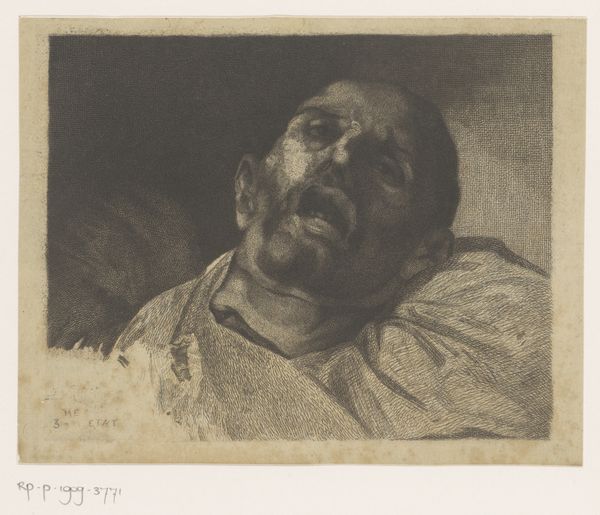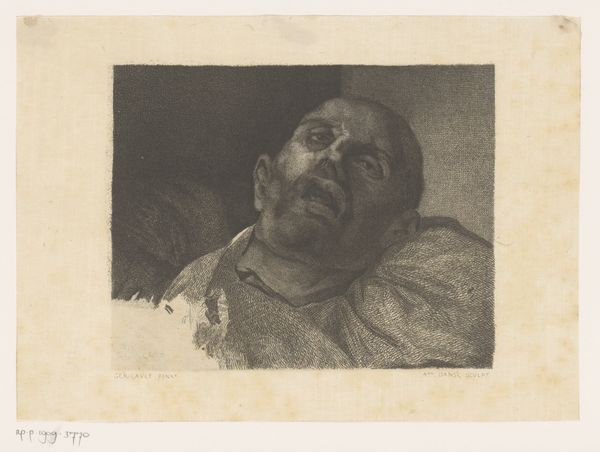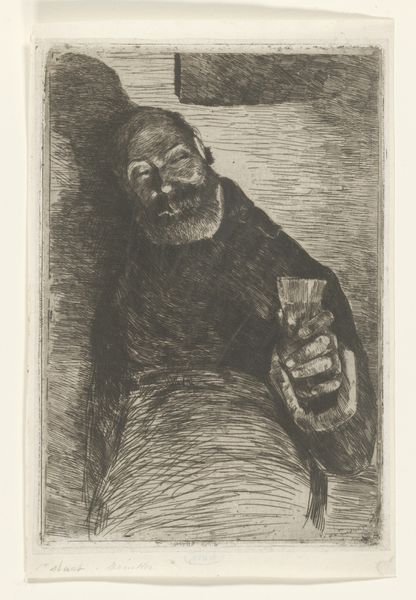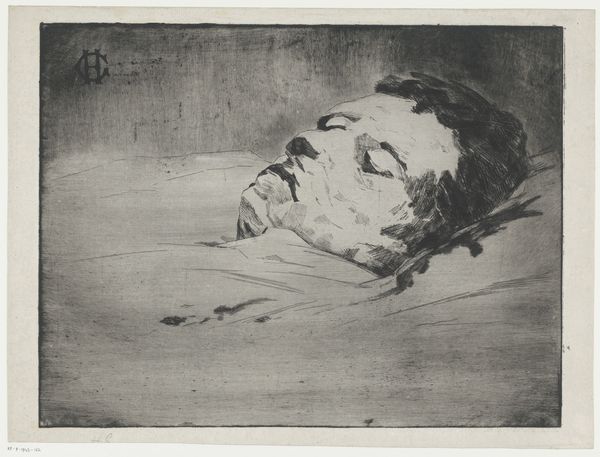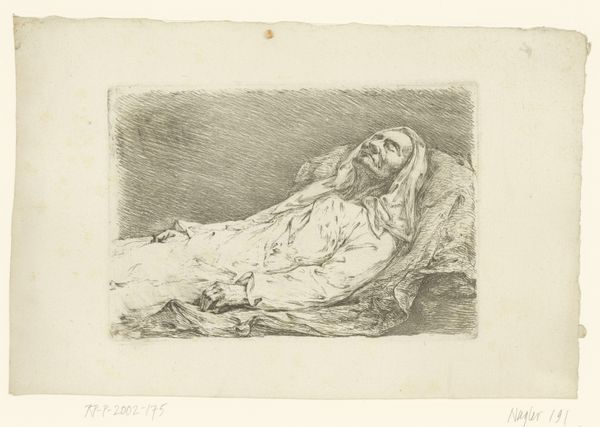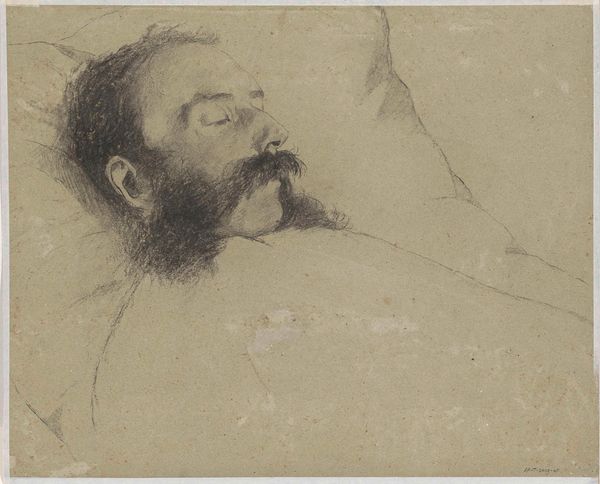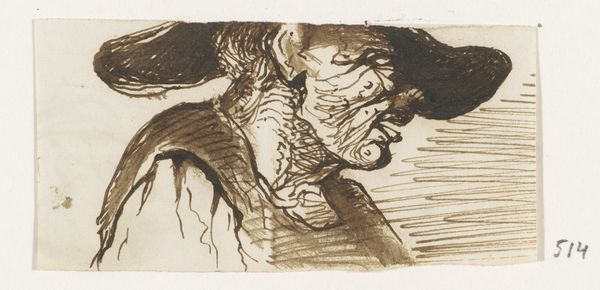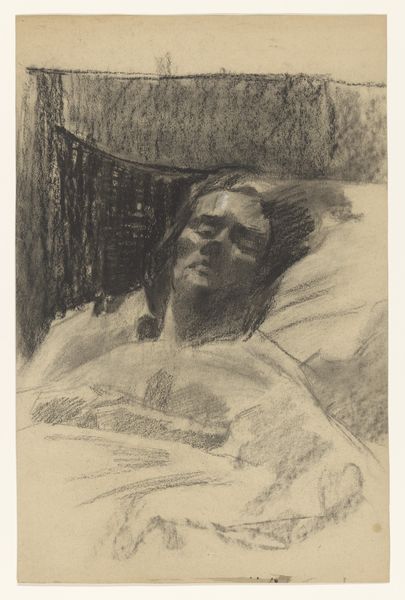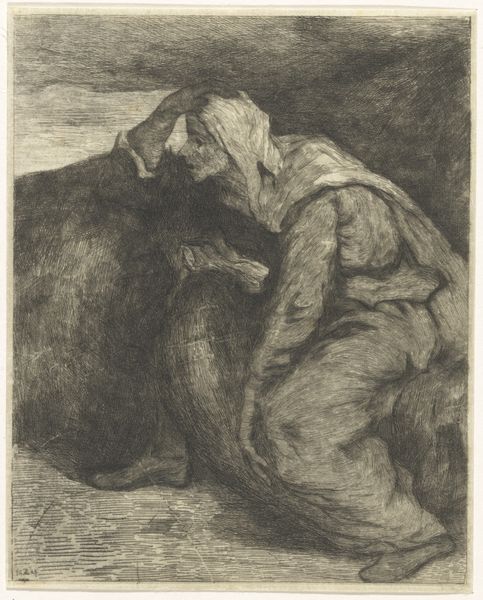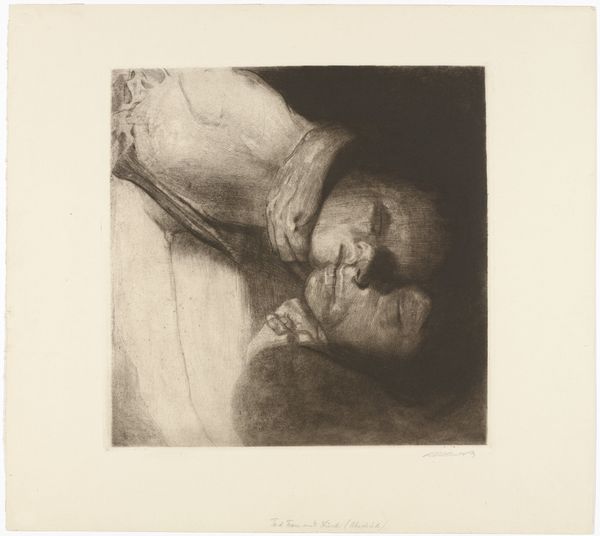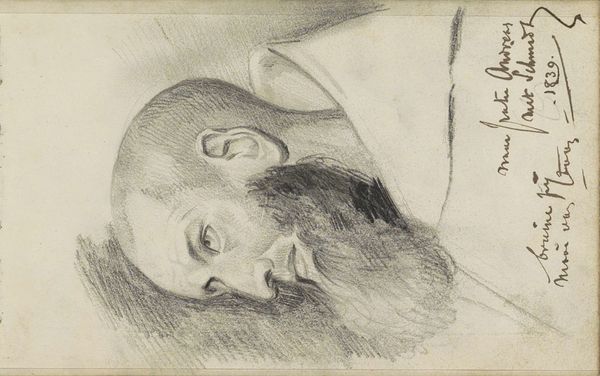
drawing, print, ink
#
portrait
#
drawing
# print
#
charcoal drawing
#
ink
#
history-painting
#
realism
Dimensions: height 142 mm, width 192 mm
Copyright: Rijks Museum: Open Domain
Curator: Here we have a powerful piece titled "Hoofd van een onthoofde man," or "Head of a Beheaded Man," dating from between 1839 and 1909, currently held at the Rijksmuseum. The artist listed is Auguste Danse, and it is executed with a combination of drawing, ink, and printmaking techniques. Editor: It’s brutal, stark, undeniably visceral. The sharp contrast between light and shadow heightens the raw emotion—the open mouth, the glazed-over eyes. There's no softening here, only raw exposure. Curator: Indeed. While seemingly a study in realism, its roots arguably lie within the grander tradition of history painting, where dramatic moments and figures convey larger symbolic weight. Decapitation imagery has long symbolized sacrifice, injustice, the brutal machinery of power. The visual motif carries considerable cultural resonance, and continues to haunt artistic expression through ages. Editor: I see that, but for me, the composition itself amplifies the horror. The tight framing forces our gaze onto the detached head. The light catches the crude texture of the skin; observe how it draws attention to the marks of violence, the rough cuts around the neck area, and the wound right at the nose… This unrelenting detail serves a distinct formal purpose in etching horror. Curator: Very astute. Moreover, heads, detached from the body, act as potent psychological triggers. Our understanding of self and identity are heavily anchored to the body; that severing becomes a severance from being itself, an erasure from life but at the same time, as seen in several mythic tales, they can be re-contextualized into an icon of deathlessness and invincibility. The historical prevalence of public executions adds another layer. Were these images meant as warning, lessons or records? The question still hangs in the air, suspended between then and now. Editor: That unresolved tension—the question of why—is what makes this more than just a gruesome depiction. The sharp lines etched create an unease that mirrors the fractured sense of existence conveyed by the subject itself. Curator: Indeed. Hopefully, this piece’s presence in the museum's collection does justice to a very potent exploration into trauma, loss, justice, and the human body's capacity to endure pain. Editor: A lasting stark reminder achieved through deceptively simple formal choices and execution of printmaking.
Comments
No comments
Be the first to comment and join the conversation on the ultimate creative platform.

